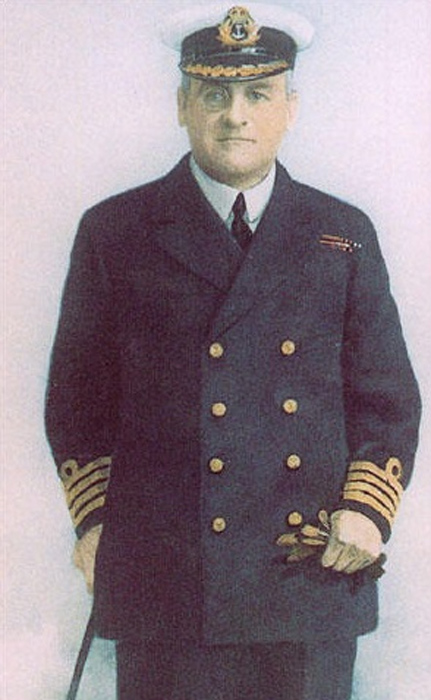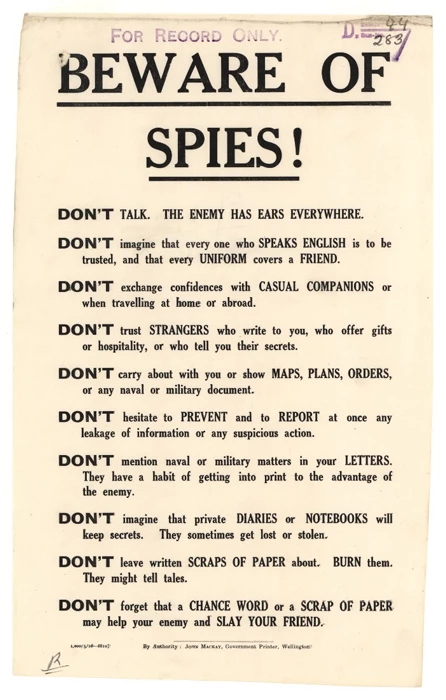When people think of MI6, they tend to think of suave spies gliding across the scene, armed with a range of gadgets to disarm the enemy. They tend not to think of any of those gadgets involving bodily fluids.
However, one of the earliest forms of secret messages was to use semen as invisible ink. But how did this come to be? Well, this article will give you some idea behind the thinking of the semen ink pen and why it was, worryingly, not as successful as its creator may have hoped.
A Strange Idea
The first director of the Secret Service Bureau, the pre-World War One department which would evolve into MI6, was a man called Mansfield Smith-Cumming. He headed the agency from 1909 and is said to have inspired the character of “M” from the James Bond novels written by Ian Fleming. During World War One Cumming discovered the need for a way to leave messages for spies so that they could secretly communicate.
Mansfield Smith-Cumming was the great-great-grandson of the merchant John Smith, who was a director of the South Sea Company and the East India Company. He was related to the banking dynasty that became the National Westminster Bank which still today is one of the UK’s largest banks.
Mansfield joined the Royal Navy at the age of 12 and received his training in Dartmouth. By the age of 19 in 1878, he was appointed acting sub-lieutenant. His first posting was on the HMS Bellerophon in 1877, and he served almost seven years fighting Malay pirates before moving on to Egypt in 1883.
- Traitors To The Crown: Who Were The Cambridge 5?
- UK Prime Minister Turned Traitor: Was Harold Wilson a Communist Spy?
Ironically, it was noted in his files that Mansfield became increasingly unfit for service as he suffered from seasickness. By 1885, he was placed on the retired list and moved to work on boom defenses on the River Hamble in Hampshire.

It was only after this that he was appointed to the Secret Service Bureau.
Head of the Bureau
In 1909, there was a growing feeling amongst the British that all Germans living in the British Isles were spies. This anti-German sentiment fostered tensions at home and became a real problem for the government.
In 1911, the Secret Service Bureau was reshuffled, and Cumming found himself appointed as the head of the Foreign Section that was responsible for spying operations outside of Britain. He became well known as “C” and often signed himself as such.
Why he was chosen seems to stem from his effectiveness at gathering intelligence. When he left the Navy, he was tasked with collecting information from Germany and the Balkans which he did by posing as a German. This was even more impressive when you learn that he did not speak German at all.
Mansfield was also able to produce a comprehensive guide to Zeppelins. Though, he did get all of his information from a publicly available source and merely had it translated from German to English. However, it is clear from the other operations that he was not the suave James Bond character that everyone would imagine.
Numerous events show him as a parody of a spy leader. He once lost his weapons expert while abroad. Cumming had failed to provide adequate directions to him and the agent was unable to ask anyone for directions as he only spoke English.
Additionally, it has been reported that he was fooled by a document that suggested German spies had extra teeth. He spent a lot of time investigating this claim.
Mansfield very rarely entered the field. In 1914, he lost his leg during a traffic accident in France. He attempted to make the story more elegant and fanciful, claiming that he amputated his own leg but alas the report shows that a medical professional did this the day after. Other times, he even claimed he lost his leg in a fight with a wild animal. It is safe to say he was a character.
The Urgent Need For Invisible Ink
In 1915, Mansfield commissioned scientists at the University of London to find a new type of invisible ink. There was plenty of evidence of German spies infiltrating British operations and as such, he hoped to find a way to ease communication between his agents and not allow his messages to be intercepted.
Little did Mansfield Smith-Cumming know that the solution would arrive from one of his own spies. An unnamed spy, and perhaps that is for the best, discovered that he could make his own ink by applying semen to the page.

It is recorded by one of Cumming’s officers that Chief Censor Frank Worthington announced to Captain Cumming that one of his staff had discovered that semen did not react to iodine vapor and as such could be used to leave invisible messages. This message was also accompanied by the notice that the discoverer had to leave his office due to his colleagues making his life intolerable by commentating on his masturbation habits. This led Mansfield to coin his phrase that “Every man his own Stylo”
Mansfield was delighted to learn of this success; however, it was short-lived. Whilst this discovery did allow British agents to communicate discreetly, it also produced a quite horrific smell by the time that the letter arrived at its destination.
One such occasion happened when an agent in Copenhagen named Major Holme wrote to Frank Stagg. In Stagg’s reply, he reminded Holme that he needed to commence a fresh operation for each letter. After the letter’s long journey, it produced an awful smell. It turns out Holme had stocked up a large supply of “ink” so that he was never caught short.
The British spy network is often lauded the world over as one of the most effective and yet history would perhaps disagree. Mansfield attempted to resolve a problem but ultimately found a solution that was not practical and definitely not sanitary. There is perhaps a reason why James Bond always carries a pen with him on every mission.
Top Image: Did the British Secret Service write letters in semen? Source: UK Government Artistic Works / Public Domain.
By Kurt Readman